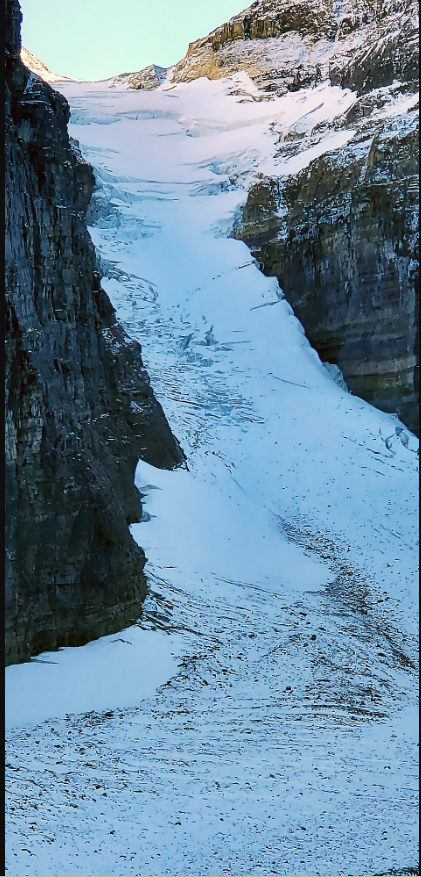 The Vigil
The Vigil
Rocky Mountain Outlook
by Bob Sandford
The United Nations International Year of Glaciers’ Preservation is a year dedicated to listening to and speaking for our vanishing glaciers. It is a continuation of a long vigil, a year during which we offer tributes to our old friends even as we do what we can to prolong their lives.
Glaciers, you were once giants. You were world makers. Creating the conditions that favored you, you grew and grew in cold strength and joined arms to take over the globe. Your cold reach at your peak was such that no liquid water was exposed to the atmosphere. And whenever the cyclic eccentricity of the Earth’s axis and orbit aligned, you did it again and again over three-quarters of the age of the Earth.
You gave the world relief and form. You ground down mountain ranges, carved out peaks, stunning Matterhorns, deep cirques and U-shaped valleys the moon could be rolled in. You scraped the floor of an ancient inland ocean to create an abundant continent.
In and of yourselves, you were monuments to a great civilization of cold that rose and fell and dominated the world for millions of years at a time.
Indigenous peoples were in awe of you. In her masterwork, Do Glaciers Listen? Julie Cruikshank asked Indigenous Elders in the heavily glaciated coastal West if they thought glaciers were sentient. Not only were they sentient, they responded, the ancient ice was often spectacularly aural and in possession of vision.
Glaciers not only listened, but they spoke, but, like trees and forests, they speak so slowly and quietly that most among us have now forgotten how to hear them. And glaciers, they claimed, also respond directly to human behavior, and are especially sensitive to indiscretion.
These First Peoples were careful not to disrespect or offend you, to speak quietly and avoid casual arrogance and hubris in your immense and terrible presence. They thought to offer reciprocity in spirit and respect in exchange for the hope of safe passage. They implored you not to swallow them up and later spit them out, mummified by the cold, with their flint-tipped arrows still intact in their quivers.
Among us today are those who measure your vital signs seeking, at last, to know you lest you be gone. The most respected glaciologists in the country report that the combination of heat and ash has doubled the rate of ice loss in only four years. You are going fast, you and your kin.
But it is too early for a wake. A cold heart is still a beating heart. But we need to be vigilant. There is still hope that we can halt the heat and avoid the peril of which the ice warns us.
The more than 50 partners in the UN Glacier Year initiative in Canada realize that science alone cannot address the climate threat; we need rational minds certainly, but that is not enough. We also need to engage our hearts. To get us through this bottleneck in the human journey, we need to embrace all the ways of knowing and caring of which we are collectively capable. If we can marshal all we know and all we care about, there is absolutely no reason why this couldn’t be the year, and here couldn’t be the place where humanity began listening again to the ice, paying heed to its warnings and creating a better future for all.
One day, when it’s likely too late to hold anyone alive accountable, we will maintain that everyone has always been against what we are doing to our planet now. Everyone will perhaps then acknowledge that humanity needs a new narrative, a fresh dream of who we are – one which tells us how to act. We will agree we need new stories about taking care of one another, and cherishing and protecting what we still have, that drive us to take appropriate climate action.
In the meantime, however, there is no more avoiding the penetrating question the disappearing ice is dying to ask.
It is a question upon which our collective future may depend.
What did you do when you knew?